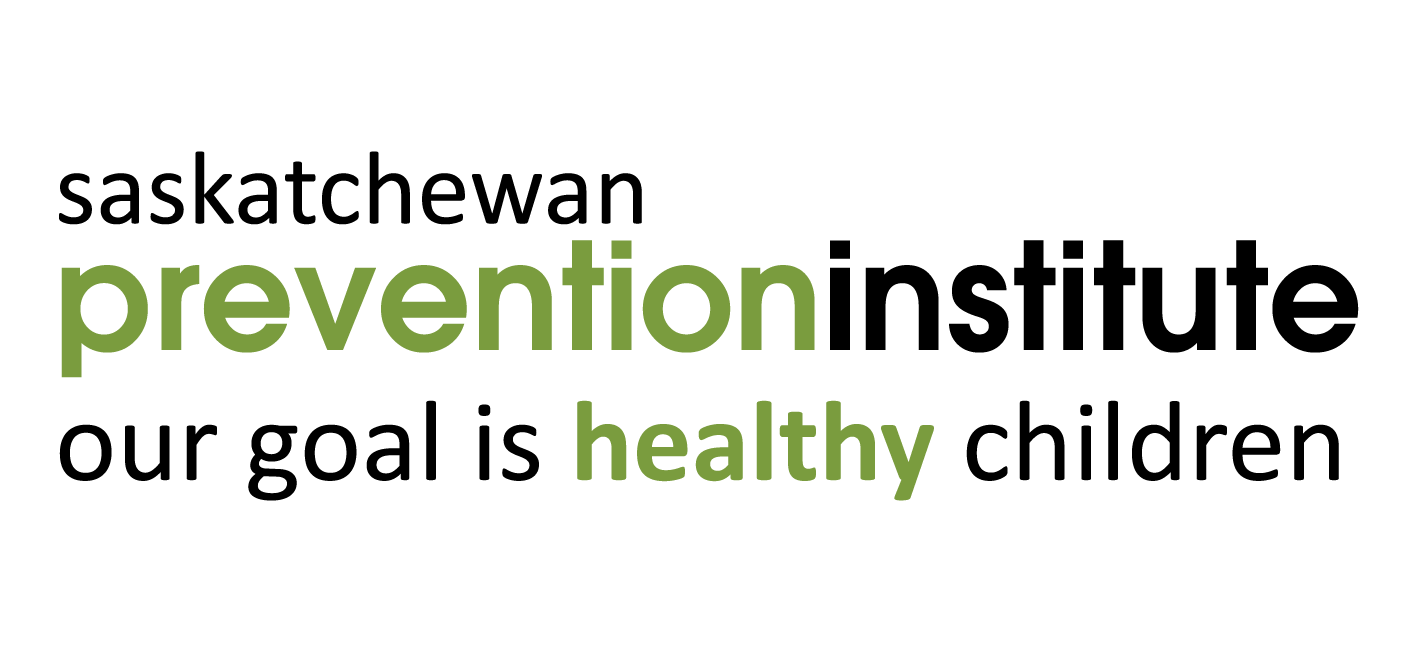
- Display 15 Products per page
-
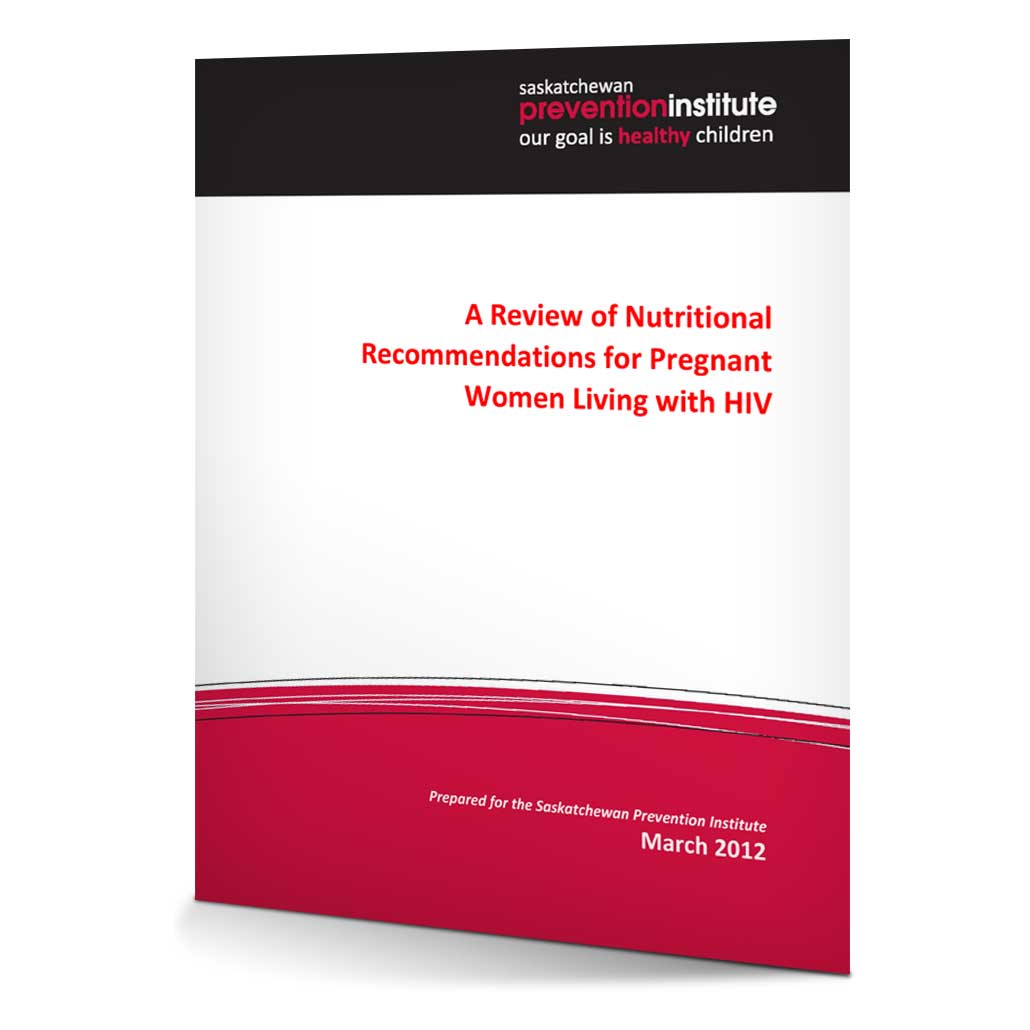
A Review of Nutritional Recommendations for Pregnant Women Living with HIV
Report, 2012
Ensuring proper nutrition is a critical component of living with HIV as it is with being pregnant. The two conditions combined mean that pregnant women living with HIV are especially vulnerable to nutrient deficiencies and these women must monitor their nutritional status accordingly. The review provides general recommendations to address these issues.
SKU: 7-510 -
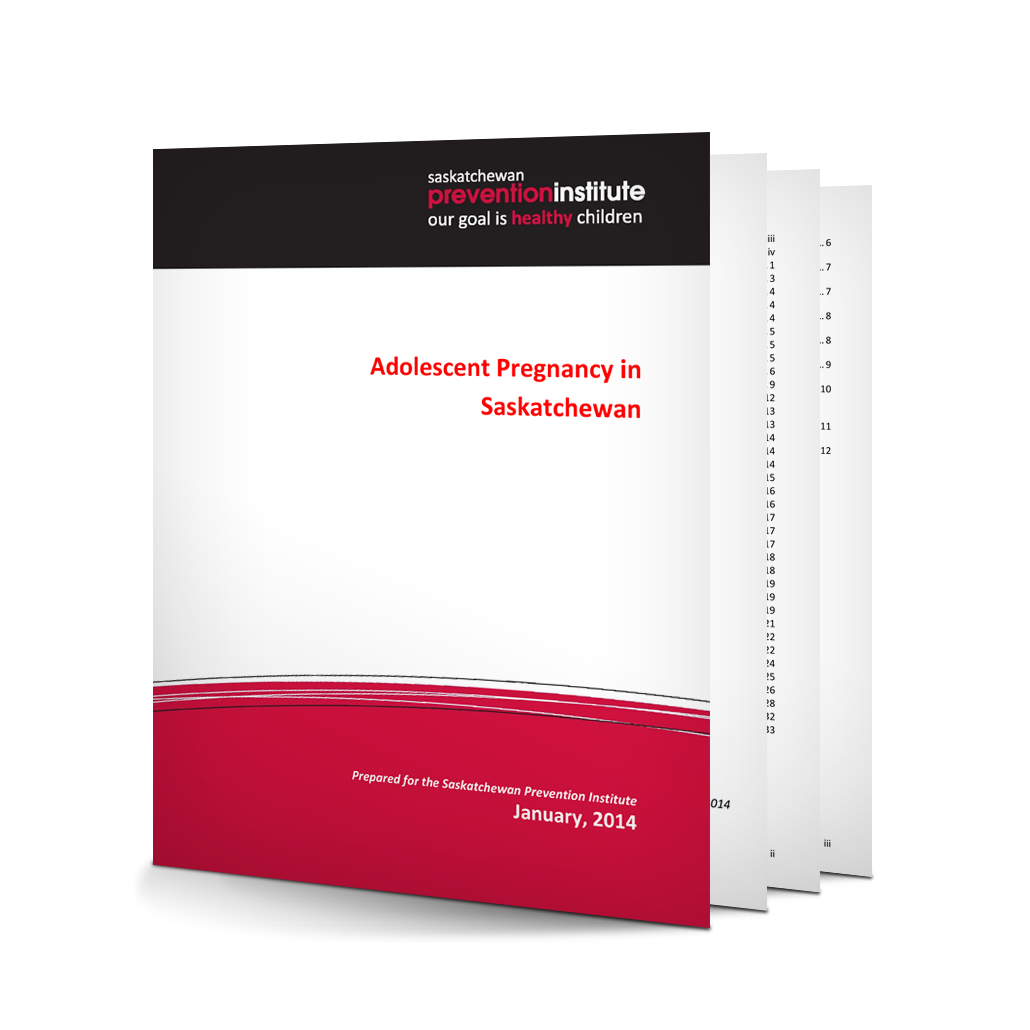
Adolescent Pregnancy in Saskatchewan
Report, 2014
In Canada, rates of adolescent pregnancy remain among the highest in developed countries and rates in Saskatchewan are among the highest in Canada. In an effort to address the needs of Saskatchewan youth, the Saskatchewan Prevention Institute has developed this report to provide a picture of adolescent pregnancy in Saskatchewan and to identify best practices that my address the specific circumstances of Saskatchewan Youth.
SKU: 7-018 -

Cannabis Use in the Childbearing Years: An Evidence Summary for Healthcare Providers
Report, 2018
Due to the legalization of cannabis in Canada, and for the health of children and families, there is a growing need to provide parents, prospective parents, healthcare professionals, and other service providers with evidence-based information about the potential risks of cannabis use. This evidence summary is for healthcare providers. It provides general information about cannabis and rates of cannabis use in Canada, as well as information about the potential risks of cannabis use before, during, and after pregnancy. This summary also offers several recommendations for public messaging based on the available research.
SKU: 2-106 -

Common Non-prescription Medications in Pregnancy
Fact Sheet, Revised 2021
Non-prescription medications, sometimes referred to as over-the-counter or OTC medications, are those that can be purchased without having a doctor’s prescription. This fact sheet provides information on common OTC medications such as antacids, antihistamines, laxatives, cough and cold medications, herbal products, and many more that are used in pregnancy.
SKU: 2-251 -
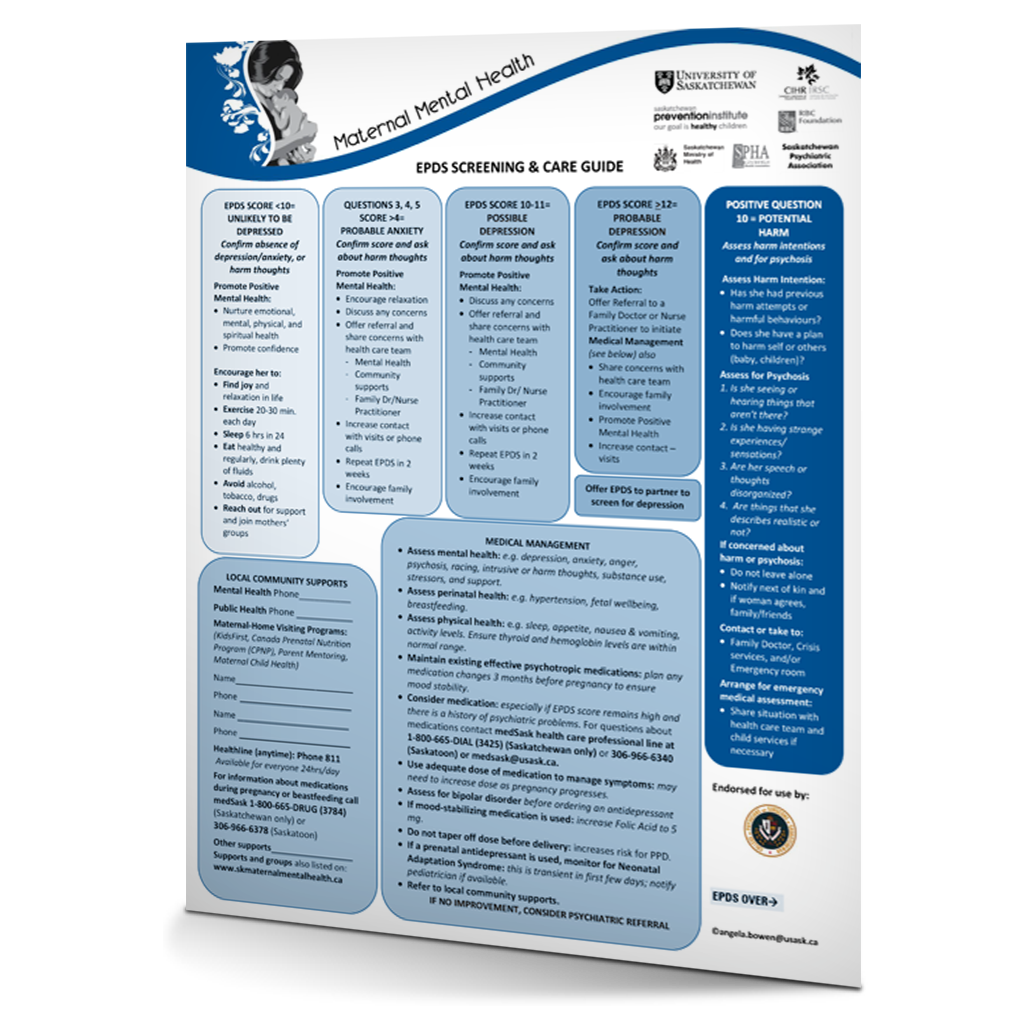
Edinburgh Postpartum Depression Scale (EPDS) Screening and Care Guide
Guide and Manual, 2012
The EPDS Screening and Care Guide provides healthcare providers with score interpretation and care guide to use when screening pregnant and postpartum women for depression and anxiety using the Edinburgh Postpartum Depression Scale (EPDS). It also includes guidelines for medical management when maternal mental health is of concern, contact information for Saskatchewan Healthline and Saskatchewan Drug Information Services, and a space for relevant local contact information. On the reverse side of the form there is a brief description of maternal depression including common symptoms, guidelines for screening, and the EPDS questions.
* For an updated version of the Maternal Mental Health Edinburgh Postnatal Depression Scale (EPDS) Screening and Care Guide available through the Saskatchewan Ministry of Health, please visit https://www.ehealthsask.ca/services/resources/Resources/EPDS-screening-2019.pdfSKU: 2-104 -
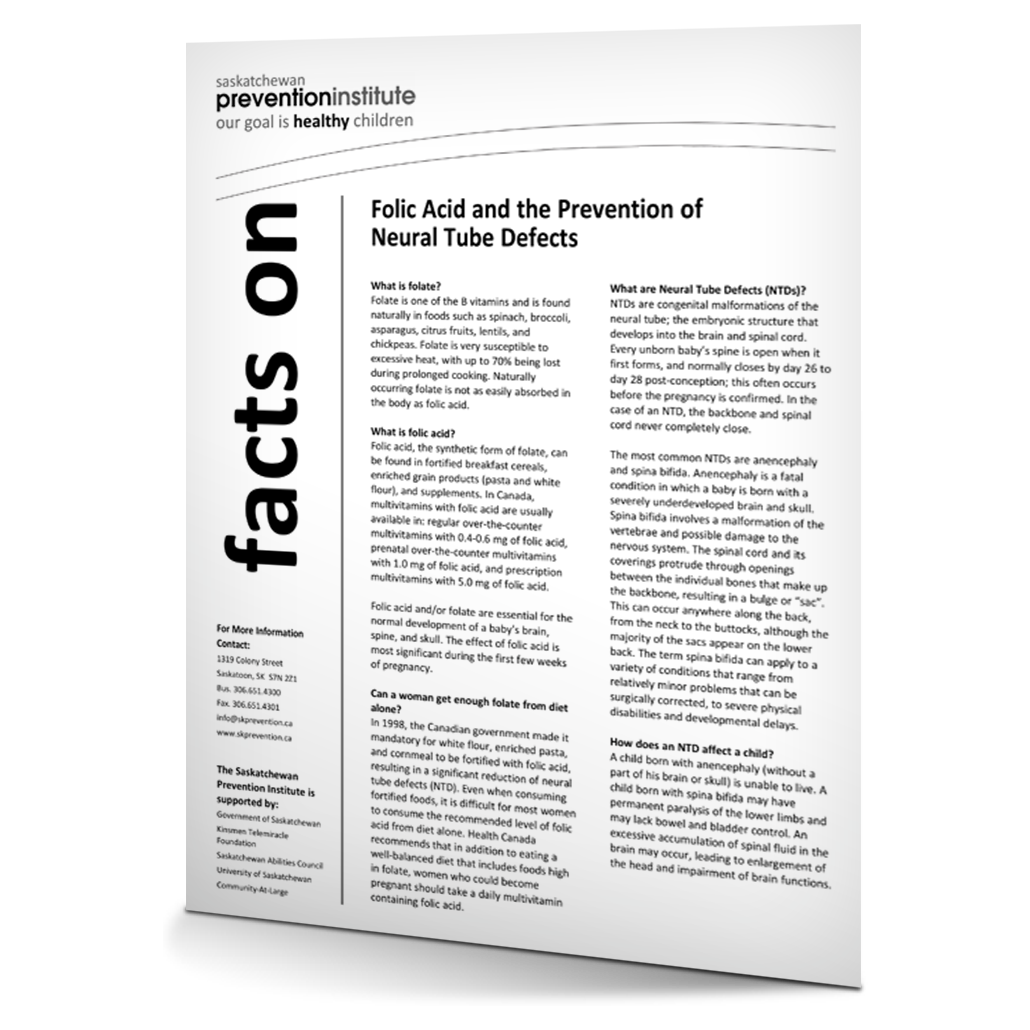
Folic Acid and the Prevention of Neural Tube Defects
Fact Sheet, 2016
Provides information on neural tube defects and the importance of taking folic acid before becoming pregnant.
SKU: 2-301 -
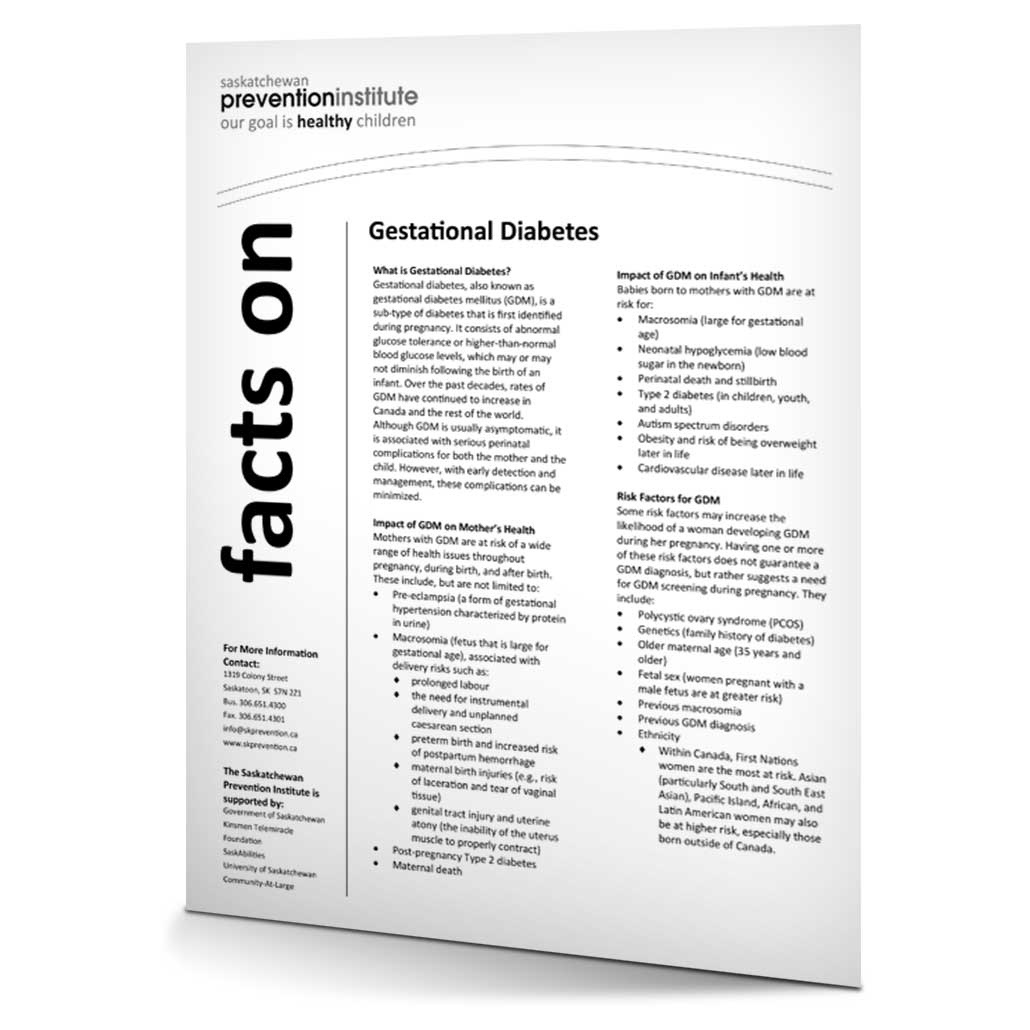
Gestational Diabetes Fact Sheet
Fact Sheet, 2020
Gestational diabetes, also known as gestational diabetes mellitus (GDM), is a sub-type of diabetes that is first identified during pregnancy. This fact sheet provides information on risk factors for developing GDM, its impact on maternal and child health, screening and diagnosis, as well as recommended management and primary prevention strategies.
SKU: 2-442 -
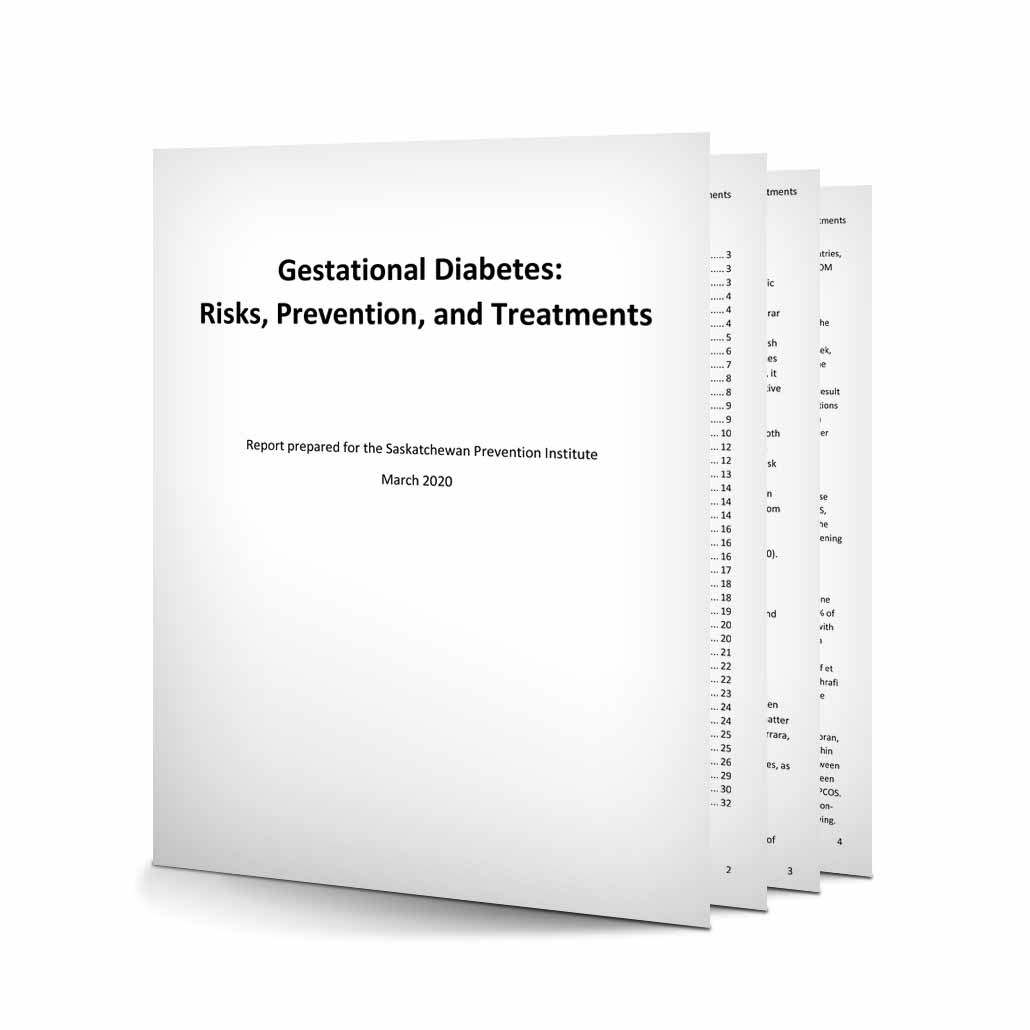
Gestational Diabetes Risks Prevention and Treatments
Literature Review, 2020
Gestational diabetes, also known as gestational diabetes mellitus (GDM), is a sub-type of diabetes that is first identified during pregnancy. It consists of abnormal glucose tolerance or higher than normal blood glucose levels, that may or may not diminish following the birth of an infant. Over the past decades, GDM rates have continued to increase in Canada. This review provides information on the risk factors for developing GDM, its impact on maternal and offspring health, the approach to screening and diagnosis, recommended management strategies (both pharmacological and non-pharmacological), as well as primary prevention strategies.
SKU: 2-448 -
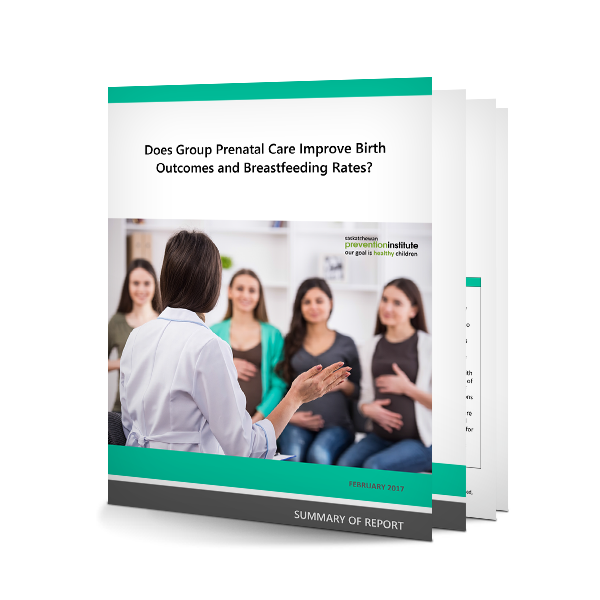
GPC Evidence Summary
Report, 2016
Group prenatal care is a model of group where eight to twelve women of similar gestational age meet as a group with their healthcare provider for 90-120 minutes of regularly scheduled appointments, starting in their second trimester and continuing throughout their pregnancy. During these appointments, each woman has a brief individual physical assessment with the healthcare provider and then participates in a group discussion led by a healthcare provider. All prenatal care is provided in this group setting, combining the usual physical assessment with peer support and increased time for education about healthy pregnancy. This report examines current research on group prenatal care to assess if it is a good model of care for Saskatchewan and if there is an improvement in birth outcomes and breastfeeding rates associated with using this model of care compared to individual prenatal care. Birth outcomes examined in this report are gestational age at birth, preterm birth, and low birth weight.
SKU: 2-904 -
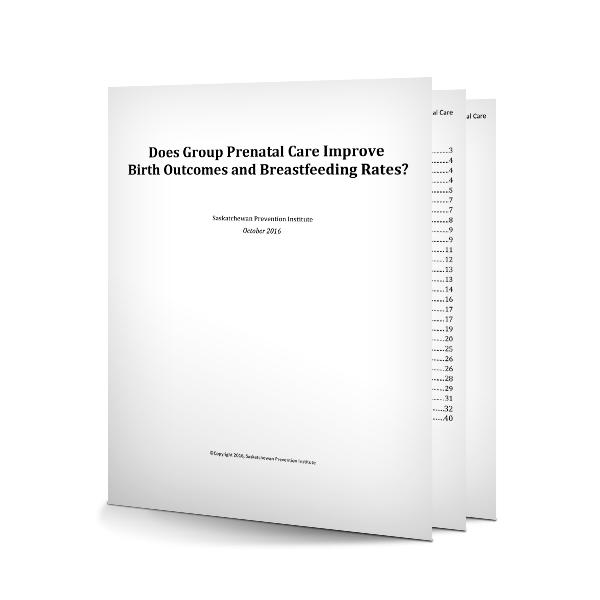
Group Prenatal Care Lit Review
Report, 2016
Group prenatal care is a model of group where eight to twelve women of similar gestational age meet as a group with their healthcare provider for 90-120 minutes of regularly scheduled appointments, starting in their second trimester and continuing throughout their pregnancy. During these appointments, each woman has a brief individual physical assessment with the healthcare provider and then participates in a group discussion led by a healthcare provider. All prenatal care is provided in this group setting, combining the usual physical assessment with peer support and increased time for education about healthy pregnancy. This report examines current research on group prenatal care to assess if it is a good model of care for Saskatchewan and if there is an improvement in birth outcomes and breastfeeding rates associated with using this model of care compared to individual prenatal care. Birth outcomes examined in this report are gestational age at birth, preterm birth, and low birth weight.
SKU: 2-903 -
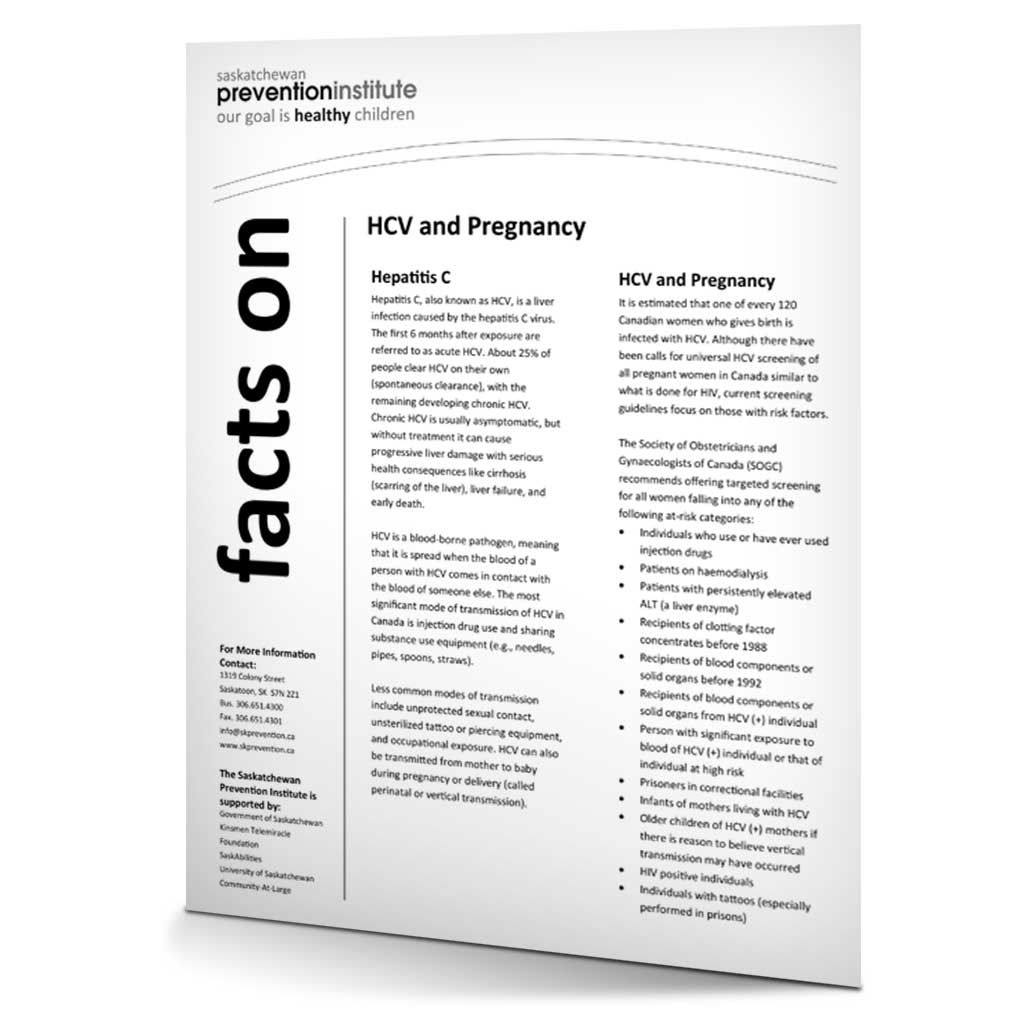
HCV and Pregnancy Fact Sheet
Fact Sheet, 2020
This fact sheet provides information about hepatitis C (HCV) and pregnancy, including information about vertical transmission (from mother to baby) and the effects of HCV on pregnancy and infants.
SKU: 7-500 -
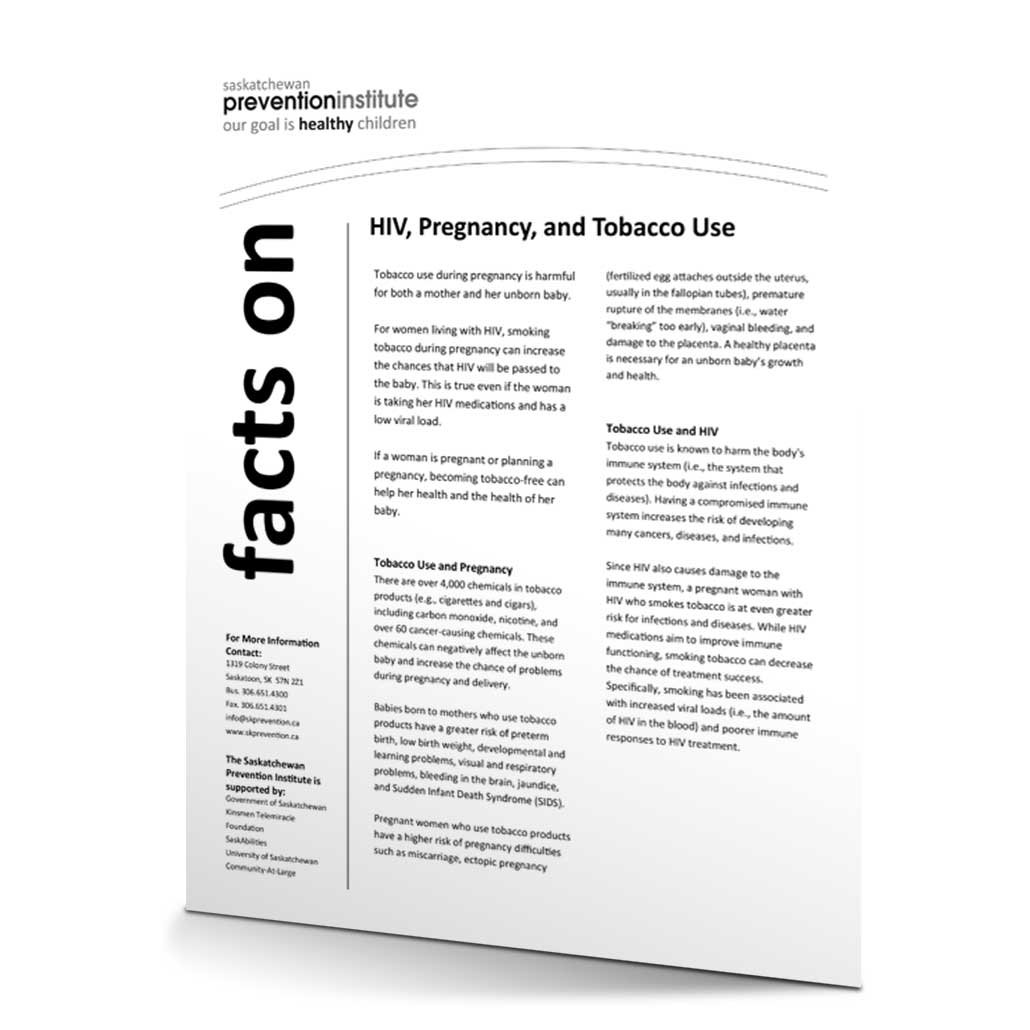
HIV, Pregnancy, and Tobacco Use
Fact Sheet, 2019
This fact sheet explains that for women living with HIV, smoking tobacco during pregnancy can increase the chances that HIV will be passed to the baby. Websites are listed to help pregnant women and those planning a pregnancy to quit or reduce their tobacco use.
SKU: 7-515 -

How Your Baby Grows
Booklet, 2002
Adapted with permission from March of Dimes, this illustrated booklet describes fetal development and physical changes experienced by the mother.
SKU: 2-100 -

Infant Mortality in Saskatchewan: Evidence to Inform Public Health Practice
Report, 2009
This document was prepared to describe the relationship between modifiable risk factors and infant mortality. It is meant to provide guidance, strategies, and support to help expand or develop programs that may contribute to the reduction of infant mortality in Saskatchewan. It includes a review of the literature regarding prevalent risk factors associated with infant mortality, as well as identifying promising practices related to those modifiable risk factors.
SKU: 2-457 -

Intimate Partner Violence During Pregnancy: A Literature Review
Report, 2023
Intimate partner violence during pregnancy is one of the biggest health risks in the prenatal period. It is associated with significant physical and psychological consequences that can be longstanding for pregnant people and fetuses. This literature review details prevalence rates, risk factors for perpetration and victimization, adverse pregnancy outcomes for both the mother and fetus, and economic impacts associated with intimate partner violence during pregnancy. Intervention strategies are also outlined.
SKU: 2-462
